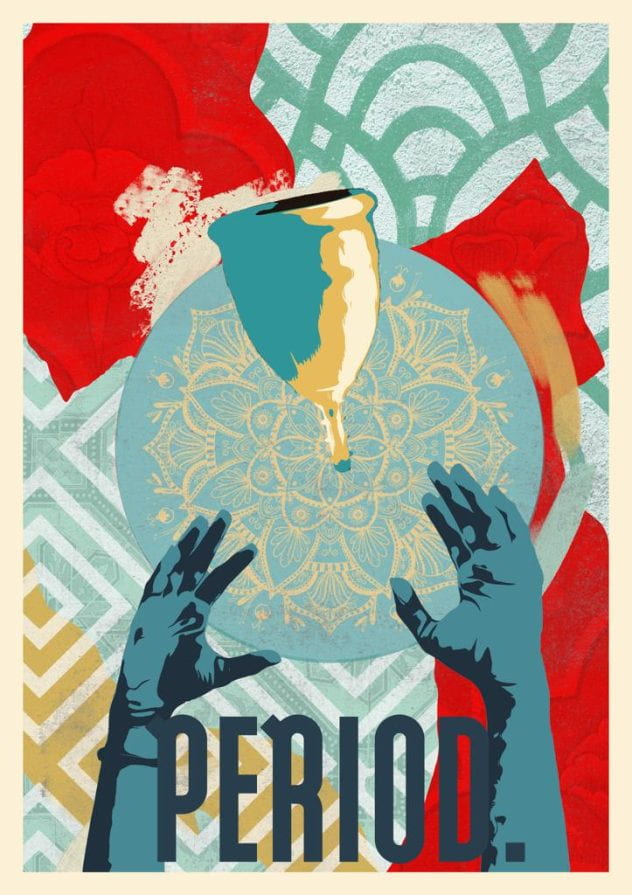Period poverty and the lack of access to sustainable products is an issue discussed in GEP and often in many other places, classes, and projects within our school. Many students show interest and concern through their projects, which may come in essays, posters, slideshows, etc. As part of their graphic design class, students were given the task of working on posters to bring attention to specific SGDs they felt they connected with. Two of the many posters created were created and designed around the SGD of Gender Equality and Zero Poverty and the idea of period poverty. We reached out to the students who developed these posters – Saanjali Mathur and Georgina Bennett – and asked them a few questions about why they chose to explore period poverty through their poster.

The first poster was designed by Saanjali, a member of our GEP team. She chose to bring her knowledge from the service to the poster as well as continue researching to enhance her understanding of the issue. Through her research, she found a case study about a young mother, Rachel Krengel, who looks after two children. Krengel was finding it hard to meet payments and was going into debt which led her to poverty. This situation led to her inability to afford menstrual products, however, she chose to keep her problems a secret as there was a large stigma around the topic of periods in her community. Krengel’s story engaged Saanjali and she decided that this topic is often ignored or avoided. She was also motivated by the prevalent issue in her home country and proceeded with her idea for the poster. In her poster, the hands reaching out for the menstrual cup represent those women who are in need of menstrual products but are unable to get access to them. Through her poster, Saanjali highlighted the issues surrounding access to menstrual products that impact not only Krengel but also women all around the world.

The second poster, designed by Georgina Bennett, was focused on the Pink Tax in the United States. The pink tax is a tax aimed at women, making feminine products more expensive than the equivalent of male products. The Pink tax is more noticeable on necessities such as menstrual products and other hygiene products, making it seem as though they are luxurious goods, or there is an improvement in the quality of female products compared to male products. Georgina says, “Sanitary products are and should be considered a necessity, and yet, companies and governments choose to make money off of women.” when asked about the topic. The Pink tax in the US is 3%. While this may seem insignificant or a low price to pay, this amount adds up over time, and for many people, may have a significant impact on their lives. Georgina believes that menstruation is not just a “woman’s problem”, everyone should be educated”.

